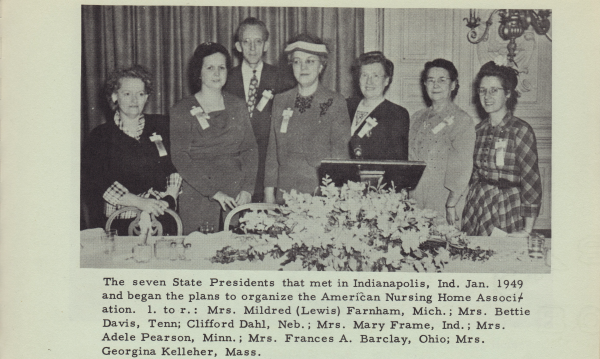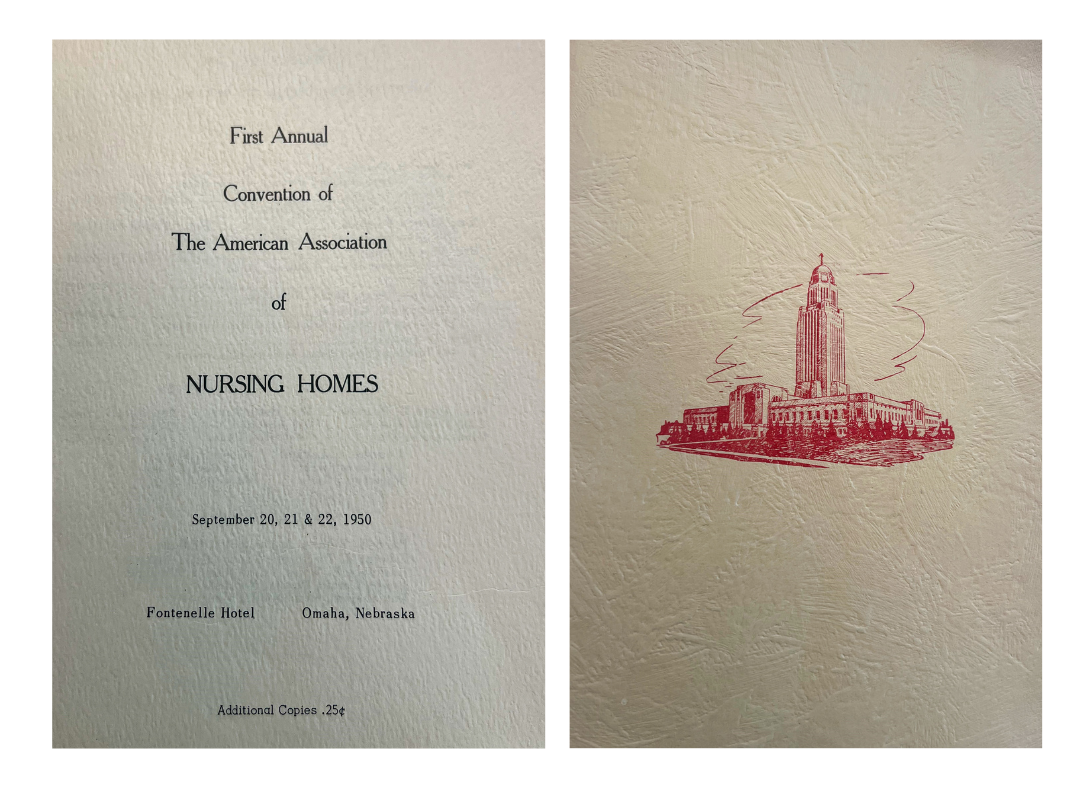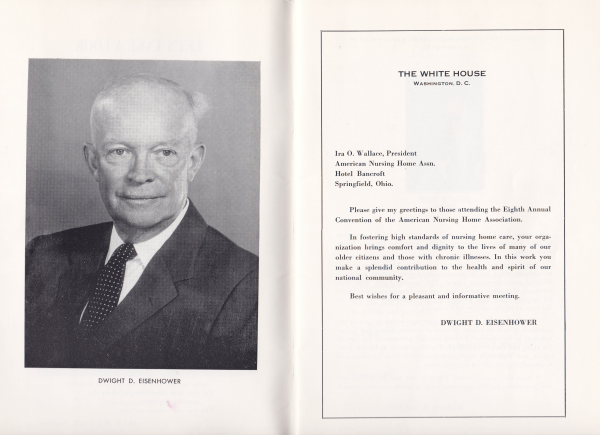One of the things we were going to celebrate at Delivering Solutions 24 was AHCA/NCAL’s 75th Anniversary. Unfortunately, due to Hurricane Milton, we were forced to
cancel our annual convention & expo in Orlando.
Even though we aren’t able to come together in-person, we want to take this moment to reflect on the history of AHCA/NCAL and the progression of the long term care profession. The AHCA/NCAL team dug into our archives and discovered some incredible photos and documents dating back to our origins. The results are the timeline below, recognizing the extraordinary individuals who brought us together and kept us moving forward.
First, check out our special video highlighting all we’ve accomplished and what the future might hold:
AHCA/NCAL Timeline

January 15, 1945: The first known meeting of nursing home administrators occurs in Indiana, organized by Mary R. Frame. This pivotal meeting resulted in the first state association, which spurred the formation of additional state associations in Ohio, Iowa, Tennessee, Nebraska, Michigan, and Missouri over the subsequent four years.
September 15, 1949: The first constitution of the American Association of Nursing Homes (now AHCA/NCAL) was adopted during an Indiana conference that drew 185 attendees from 15 states. Mary Frame was the first president.

September 1950: The first annual convention is held in Omaha, Nebraska with the theme of "a home in which to live, something to do: someone to care."
1955-1958: In 1955, amalgamation meetings were held with the National Association of Registered Nursing Homes, and in September, the decision was made to call the joined associations the American Nursing Home Association. The merger was completed in 1956. The national offices moved from Toledo, Ohio to Washington, DC in 1958.

Letter from President Eisenhower for the American Nursing Home Association’s Eighth Annual Convention.
1967: AHCA establishes National Nursing Home Week, to be celebrated each year beginning on Mother’s Day in May. The first annual National Nursing Home Week held May 14-20, 1967, adopted the theme of “A Fuller Life”. The week is now known as National Skilled Nursing Care Week.

1974: AHCA creates Provider magazine. Provider celebrates its 50th anniversary this year and remains the most-read publication in the profession with a distribution list of more than 52,000 recipients.

Artist rendering of AHCA/NCAL’s former offices in Washington, DC
1975: The American Nursing Home Association becomes the American Health Care Association.
1996: AHCA establishes the National Quality Award Program based on the core values and criteria of the Baldrige Performance Excellence Program. The Quality Awards have recognized more than 6,500 long term care organizations at the Bronze, Silver, or Gold Award levels.
2012: AHCA/NCAL announce the Quality Initiative, aiming to further improve care in nursing homes and assisted living communities by establishing measurable targets. The Quality Initiative results in a decade of significant quality improvement, especially in reducing antipsychotic medication and hospital readmissions.
2013: AHCA and the Alliance for Quality Nursing Home Care join operations, uniting the nursing home sector under the leadership of AHCA/NCAL President & CEO Mark Parkinson. 
March 2021: AHCA and LeadingAge release the Care For Our Seniors Act – a bold set of nursing home reforms in light of the COVID-19 pandemic. The comprehensive package of policies focuses on fully funded clinical, workforce, oversight, and structural improvements.Today: In many ways, long term care is still recovering from the pandemic due workforce losses and economic pressures. Yet, nursing homes, assisted living communities, and intermediate care facilities for individuals with disabilities are on the road to recovery and the future is bright.
Providers are committed to quality and innovation to meet the evolving needs of their residents. With a growing elderly population, the demand for long term and post-acute care will increase. AHCA/NCAL will continue to fight for meaningful resources and policies to help providers deliver high-quality care and improve the lives of those they serve.